“We own an 1890 Queen Anne Victorian home. After putting in major renovations for 10 years (boiler, electric, central air—and pushbutton light switches), we’ve arrived at the ‘pretty’ interior work. We are thrilled that the woodwork has never been painted! OHJ celebrates [our] labor of love. In a world where magazines and TV shows push open concept, painted woodwork, white kitchens (while calling that ‘maintaining history’), we thank you for standing for the integrity of historic houses [and] those of us who treasure their features.” —The Case family, Elwood, Indiana
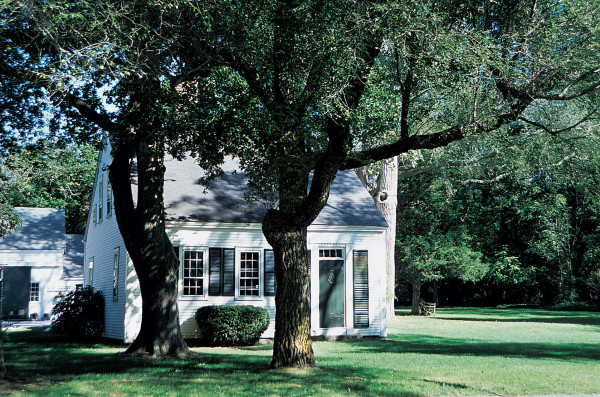
Most old houses are not exemplars, and nobody famous ever lived there. But even a stoic half-Cape like this one embodies 250 years of history and, well preserved, is a cultural artifact. A cluster of old houses defines a neighborhood or town.
Franklin & Esther Schmidt Archive
After a joint Congressional resolution was signed into law, the National Trust for Historic Preservation began celebrating Preservation Week in 1973. The Presidential proclamation read, in part: “As the pace of change accelerates in the world around us, Americans more than ever need a lively awareness of our roots and origins in the past on which to base our sense of identity in the present and our directions for the future.”
In 2005, the Trust extended the celebration to the whole month of May. At the national, state, and local levels, organizations host events, instill community pride, promote heritage tourism, and share information about the benefits of preservation. This retrospective looks at what private homeowners can do in their own houses.
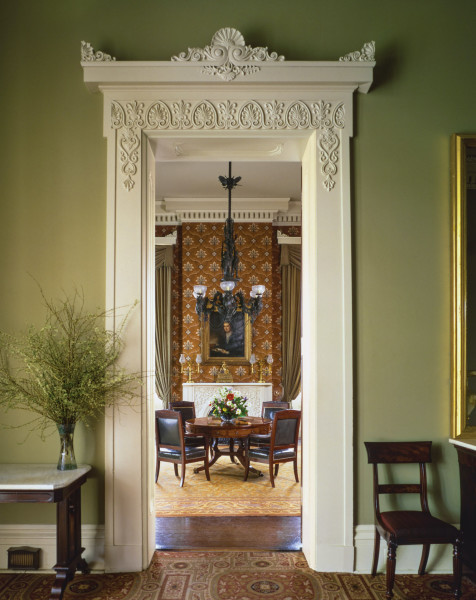
A spectacular house attracts owners who appreciate and will conserve it. Still, owing to changing tastes, many old houses have lost solid walnut doors, cast plaster, stained glass—parts never to be replaced.
Paul Rocheleau
Celebrating preservation is not the same as calling for period rooms. Many people don’t want the fuss or expense of a revival interior. Preservation allows for painting the plaster walls white and hanging modern art. Preservation doesn’t demand putting back what was lost.
It’s critical to understand the difference between what is permanent (ripping out the main staircase) and what is ephemeral (painting a bedroom blue). Not that it’s always so clear, of course: painting original, natural-finish mahogany or quarter-sawn oak comes to mind. It’s reversible, sure, but only after pain and suffering, and with an environmental cost.
Unlike restoration, which can be conjectural and expensive and is rarely a mandate, preservation is an easy call. At the core, it means “let it be.” Whether the work at hand involves restoration, rehabilitation, or remodeling, having a preservation mindset is good because it helps avoid destruction. Much of our old housing stock holds rare material, magnificent craftsmanship—and our cultural history. Old houses often suggest valuable lessons: Aren’t pocket doors proof that an open plan sometimes needs to be closed?
As temporary inhabitants, we should resist destroying things, especially the good work of the past and anything that managed to survive decades or centuries of use. We should respect the workmanship we find, and honor materials that may be no longer available or affordable. It’s best to repair rather than replace elements, because eventually, after generations of replacement, a house is no longer original, and probably not coherent.
“Your taste doesn’t matter.” We’d have more preserved old houses if generations of owners had only taken that to heart. OHJ editors have seen Eastlake mantels discarded “because it’s fussy” and endless original bits thrown away for being “old-fashioned” or the “wrong” color.
A house represents a particular time and style. If we learn about it, our changes will be in keeping with the original design. The mid-20th-century proclivity to turn Victorians into Colonials, for example, did not work out. Stripping off the gingerbread and painting out these houses only succeeded in making them ugly “white elephants” that would be very expensive to restore. From repairs to additions, any new work should enhance and clarify the original design intention, or at least not detract from it.
A harder sell is consideration of elements that make the house a cultural artifact. Perhaps the current owner doesn’t use the narrow boxed stair at the rear of the house, or the cold pantry, or the fireplace in the dining room. Take them all away, though, and the house has lost the significance of its history. We must be careful about how much we change, because there is a tipping point. Most of us fell in love with an old house—not a new house made of old materials.
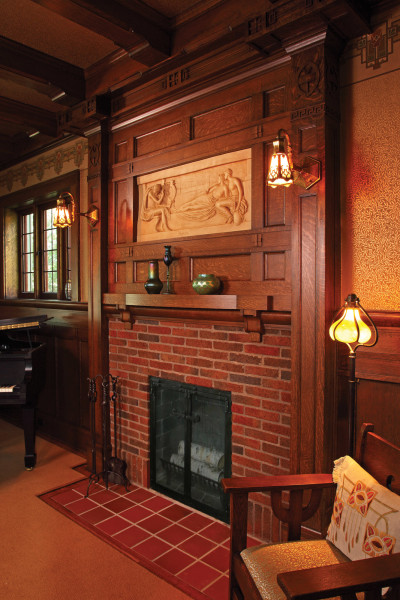
The relief panel was conserved; then the designers looked to existing elements in the room to create a proper frame and mantelshelf.
Greg Page for DHDS
The Unexpected Find
Dignity restored—by way of the rescue of a major feature hidden away during a previous remodeling. The owners of the fine but neglected house in St. Paul, Minnesota, asked David Heide Design Studio to help with the eyesore in the parlor: the fireplace. Discovery of a relief panel under the Sheetrock led the project. About half the brick was salvaged, and an overmantel designed to match woodwork in the room.
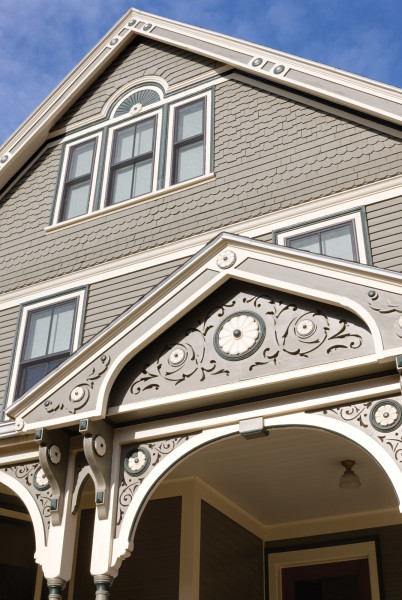
Selected for the owners’ subdued taste, the scheme using four historical colors nevertheless brings out the original, highly ornamental exterior.
Greg Premru
Preservation Allows Change
Neighbors and passersby enjoy the curb appeal of this Victorian, one in a row of Queen Anne houses built between 1883 and 1891. Shingle patterns, wraparound porch, and lively ornamentation are original, as are woodwork, plaster, flooring, and stained glass inside. It’s no time capsule, however. Architect John Altobello worked to marry preservation to the uncluttered taste of his clients, who prefer a contemporary, monochromatic look over drapery and wallpaper—striking a balance between the ephemeral (paint) and the essential (architecture). Altobello also designed a substantial rear addition for a new kitchen.
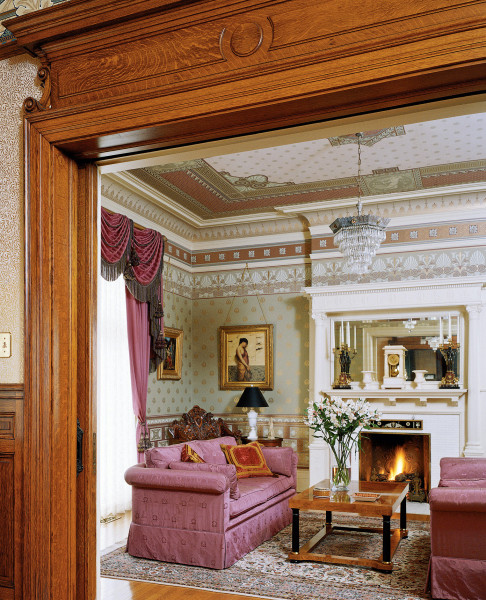
Intrinsic value: of old-growth hardwood, fine workmanship, folk graining that survives on a mantel.
Alise O'Brien
Consider…
- Intrinsic value: of old-growth hardwood, fine workmanship, folk graining that survives on a mantel. That alone makes a thing worthy of preservation.
-
The intention of the original design. A new owner might be forgiven for tearing out an element that has been sullied or feels anachronistic. But what does it tell us? Cleaned up, that very item may be a focal point and a clue to proportions—even if decorating isn’t “period.”
-
Contribution to the streetscape. For example, despite the difficulty and expense, owners of this Register-listed Queen Anne found it imperative to restore its Victorian porch. Enough of the structure and lacy panels remained to guide the work by Full Circa of Portland, Ore. A fanciful period porch remains a public amenity—worthy of preservation, even if the current owners might prefer a white-painted interior furnished by West Elm.
-
Saving the best part, even if the rest is trash. New owners found this hot-pink and turquoise remodeling, ca. 1969—the contractor assumed it should come down to the studs. But that big built-in dresser on the rear wall is original, worth preservation, and a great start for the design of a kitchen that goes with the house.
-
Keeping a record of the particular history. Adaptive reuse comes with a story, for example, which is why OHJ readers finding themselves at home in an old firehouse, a one-room schoolhouse, or a church decided to preserve the firemen’s pole, the bell, or the stained glass.
-
Cleaning it first. Unappealing as filth may be, it’s not a good reason to toss out greasy cabinets or tarnished brass. Don’t rush; and assume a lot of things are salvageable once stripped or cleaned.
-
Recent history. The idea that anything built after 1945 is not worthy of preservation was long ago amended. In many cases, it’s true that the materials are nontraditional, but such innovations as laminates and plate glass hold their place in history. These houses and even whole developments are part of the cultural and built continuum. Consider iconic mid-century houses by Joseph Eichler—modest, albeit progressive and livable, homes going for well over a million dollars. Postwar Lustron houses, factory-produced and made of steel, are listed on the National Register. And don’t assume that well-conceived later work has to be “scraped” from every historic house. We’ve been delighted to find a high-style Art Deco bathroom in an 1880s Queen Anne, and a glossy Depression-era kitchen in a woodsy Arts & Crafts Bungalow!
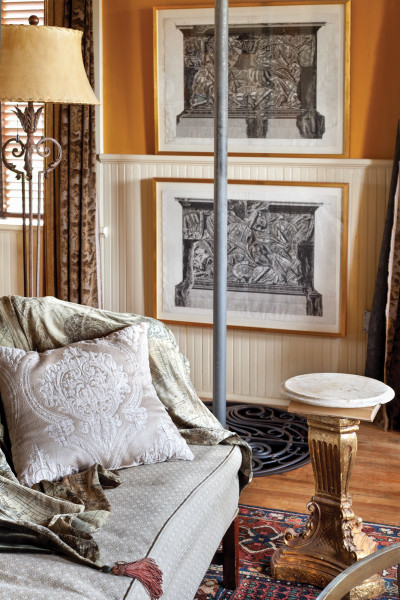
When a firehouse transformed into a home, it preserved pieces of its past.
Gross & Daley Photo







